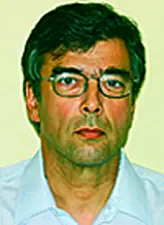Jean-André Sauvaud

The 2009 Julius Bartels Medal is awarded to Jean-André Sauvaud for his outstanding contributions to the measurement and understanding of the complex particle populations in the Earth’s magnetosphere.
For more than 25 years, Jean-Andre Sauvaud, presently Director of the Centre d’Etude Spatiale des Rayonnements (CESR) in Toulouse, has made outstanding contributions to our understanding of Earth’s magnetosphere, covering a wide range of topics, from radiation belt dynamics, time-dispersed auroral particle injections, the contribution of ionospheric particles, magnetopause and plasmasheet boundary layer properties, substorm processes, to energetic particle precipitation caused by ground-based transmitters.
Arguably Sauvaud’s biggest contribution is the identification of cold ions of ionospheric origin in two key regions of the magnetosphere. As these ions have very low energies, they are not directly measurable by plasma instruments. But Sauvaud has found unique ways to overcome this limitation. In one case he has exploited the fact that rapid motion of the magnetopause can push cold ions into the energy range visible to the Cluster ion instrument. This allowed him to identify a very dense population of thermal ionospheric ions in a region earthward of the magnetopause. In a similar way he was able to measure the otherwise “hidden” distribution of cold ionospheric ions in the plasma sheet, only this time the drift needed to make these ions visible occurred when large disturbances propagate in the plasma sheet boundary layer. Needless to say, the presence of large quantities of cold plasma can dramatically change the plasma processes in these region, and their discovery is thus of great fundamental importance.
Another major contribution is his discovery of various types of velocity dispersed ion populations associated with the aurora. Of particular importance is his finding that during the ion energy dispersions at the poleward boundary of the plasma sheet, known as velocity dispersed ion structures (VDIS), high-energy protons arrive first, regardless of the direction of the plasma sheet boundary crossing, proving that they are caused by temporally isolated injections of ion beams at different distances along the magnetotail neutral sheet. A good example to illustrate Suavaud’s wide range of interests is his recent discovery that Whistler waves generated by powerful ground-based transmitters can increase the loss-cone flux of energetic electrons in the radiation belt by a very large factor.
While Sauvaud’s science results have established him as one of the leaders in the field of space plasma physics, he is at the same time an excellent experimenter, who has been responsible for the design and calibration of superb particle instruments flown on numerous space missions.
